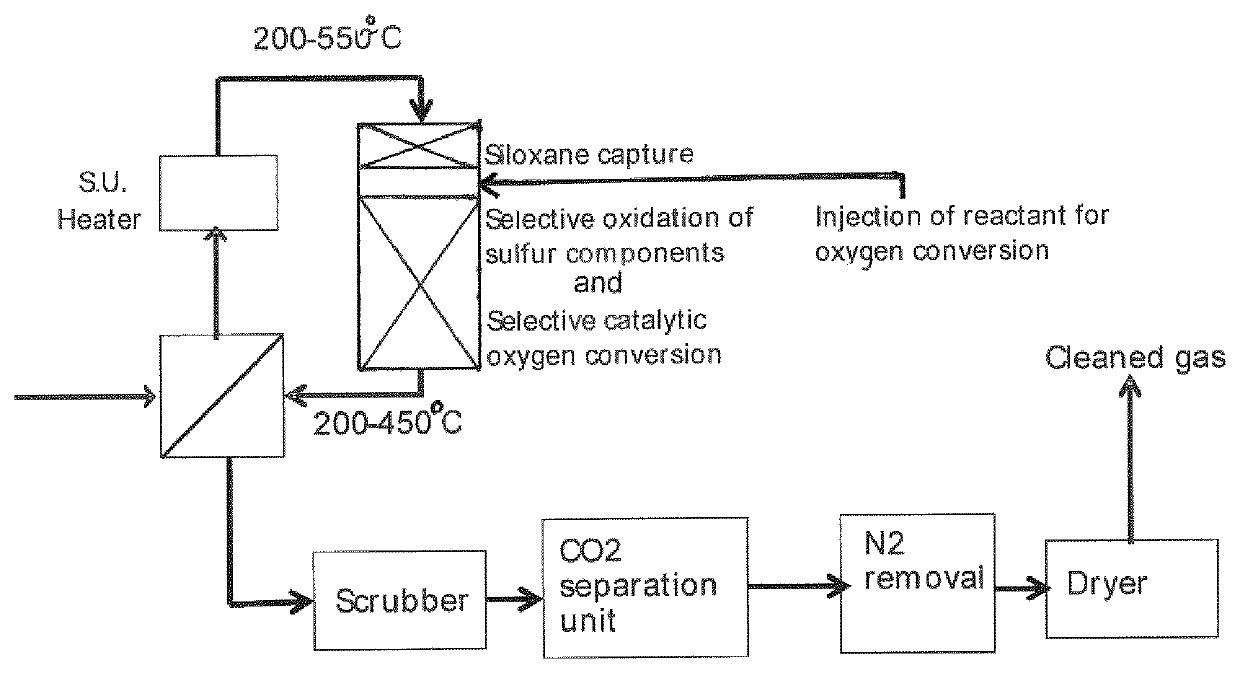Method for the removal of oxygen from an industrial gas feed
- Summary
- Abstract
- Description
- Claims
- Application Information
AI Technical Summary
Benefits of technology
Problems solved by technology
Method used
Image
Examples
Embodiment Construction
[0026]In the method according to the present invention, one or more components suitable for catalytic oxidation are injected into the oxygen-containing main gas stream after removal of siloxanes and silanols from the gas. The components and the catalyst are chosen so that the catalyst oxidizes the injected components using the oxygen in the stream without substantially oxidizing the valuable components, such as methane, in the gas stream.
[0027]The components to be injected may comprise one or more of i.a. H2, CO, ammonia, urea, ethanol and dimethyl ether (DME).
[0028]The active catalyst may comprise a metal selected among vanadium, tungsten, chromium, copper, manganese, molybdenum, platinum, palladium, rhodium and ruthenium in metallic or metal oxide form supported on a carrier selected from alumina, titania, silica and ceria and combinations thereof. Sulfur impurities in an industrial gas can create a corrosive environment inside power generating equipment or even poison catalysts t...
PUM
| Property | Measurement | Unit |
|---|---|---|
| Temperature | aaaaa | aaaaa |
| Temperature | aaaaa | aaaaa |
| Energy | aaaaa | aaaaa |
Abstract
Description
Claims
Application Information
 Login to View More
Login to View More - R&D
- Intellectual Property
- Life Sciences
- Materials
- Tech Scout
- Unparalleled Data Quality
- Higher Quality Content
- 60% Fewer Hallucinations
Browse by: Latest US Patents, China's latest patents, Technical Efficacy Thesaurus, Application Domain, Technology Topic, Popular Technical Reports.
© 2025 PatSnap. All rights reserved.Legal|Privacy policy|Modern Slavery Act Transparency Statement|Sitemap|About US| Contact US: help@patsnap.com

